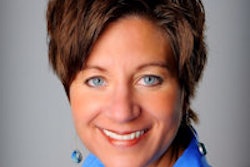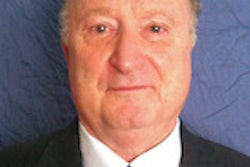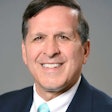
How this analysis is useful for practice management
The point of this series is to encourage dental group practice owners to more critically evaluate the profitability of their group and of each individual dentist in this group in particular. By taking the time to look in a detailed manner at their business, they can begin to make operational changes that will slowly but surely move their practices into secure financial footing, providing not only a strong level of profit but also creating comfortable working relationships with associate dentists. As the group practice model expands furiously across the U.S., it is time to support these owners with solid financial structures.
 Jill Nesbitt, MBA, is a dental group practice management consultant from Nashville, TN, who also serves as the chief operating officer for a multilocation group.
Jill Nesbitt, MBA, is a dental group practice management consultant from Nashville, TN, who also serves as the chief operating officer for a multilocation group.If you are the owner or administrator of a large group dental practice, then you can see how each approach of dividing expenses affects individual dentist contribution to the profitability of your practices. You can assess the dentists and the hygienist team working in your locations and determine if the dentists are similar enough -- what if we had three full-time dentists at similar levels of production and our hygienist team wasn't far behind? Then, the simplest option would be to divide expenses evenly. In all examples, allocating dental supplies based on production possesses logic that all dentists can buy into -- and, therefore, incentivizes each dentist to reduce dental supplies expense.
You may create one version of this profitability analysis for the owner and a less sensitive version for your dentists by leaving out compensation. This allows the owner to see the reality of what is being paid to each dentist and how substantially this payment affects overall profitability -- which may help the owner to focus on cost-cutting opportunities to drive up profits. Before you start to see red and shout that this focus on profitability is the problem with so-called "corporate dentistry" -- let's take a look at the expenses and dental supplies. This is a problem for both corporate and noncorporate dentistry.
 Thomas Climo, PhD, is a dental practice management consultant and a past professor of economics in England.
Thomas Climo, PhD, is a dental practice management consultant and a past professor of economics in England.In our previous examples, expenses were $61,400, which ranges from 23% of production to 26% of collection, depending on your preference of comparison. Also in those examples, dental supplies were $38,000 this month -- at a range of 14% to 16%, a good 8% to 10% higher than the industry average of 6%.
Since our owner is not practicing dentistry onsite but receiving a fixed salary monthly (that he hopes comes out of profits), he can clearly see the problem of the high dental supplies -- and realize the need to influence his or her associate dentists to reduce this expense. One of the benefits of taking time to calculate an analysis of this type is that it provides valuable content for individual meetings with associate dentists to show how expenses take a much larger chunk of collections than they might imagine.
In our examples, total staff expenses range from 31% to 35% and on top of the staff, paying our associates 21% puts staff expenditures at around 55% of collection.
These expenses add up! In fact, our owner didn't fare very well this month. As you can tell from the expense side of the table, the owner-dentist has some work to do before he enjoys much profitability -- and encouraging the dentists onsite to help him identify cost savings will go a long way toward achieving economic success.
Practical takeaways
Considering this article focuses on management accounting, the purpose is to provide practical takeaways that group dental practice owners could use to improve their bottom line. This is a far cry from the casual conversations at dental meetings where gross production numbers are bandied about and magically everyone's expenses are perfectly on target. Management is messy. It takes time to sort through an evaluation of profitability per dentist and excellent communication skills to then meet with each dentist to share the results. So, why bother? There are several benefits and ways this performance evaluation provides value to a group practice owner.
1. Achieve better results
Using an income statement to provide more than just a grade card of performance, a thorough review of expenses and their appropriate allocation leads to the discovery of opportunities to improve the practice. It's the difference between a "Huh, so that's how things turned out this month" versus a "So, how can we work on this staff compensation expense to get it to fall in line with national benchmarks?"
2. Your dental CPA is a start
Dental certified public accountants (CPAs) across the U.S. are not offering this type of analysis, because it takes too much time and is beyond the scope of their services. From a management accounting perspective, the income statement/balance sheet combination provided by a dental CPA is an excellent start that should be guided by the owner to support his or her management. This means that the owner tells the dental CPA how he wants the income statement structured in terms of grouping expenses, and then the data are used for further analysis and discussion within the management team.
3. Establish a standard for associate performance
As group practice owners begin to look closely at the individual performance (both clinically and financially) of associate dentists, perhaps a standard will emerge. In today's world, associate dentists have many resources to determine their compensation level. Stories shared across pizza in the dental school lounge continue to set the compensation bar higher and higher. Yet, what support exists for the practice owner who bears all the risk to be sure to earn a solid profit so he or she can support the lifestyle and families of multiple associate dentists?
When these associate dentists receive 21% (on average) of the collections in a practice and add the national standard for staff compensation of 28%, an owner is looking at 49% overhead before a single glove is purchased! With this level of expense, dental group practice owners may find it incredibly beneficial to spend the time on this type of analysis.
4. Help the owner focus on cost cutting
Group practice owners have a variety of responsibilities, and just like every job, some tasks are more enjoyable than others. Hopefully, a dentist-owner is investing time and energy in the clinical development of the associate dentists in the group. Teaching them how to facilitate patient needs, developing their comfort level with discussing total fees, and financially supporting their clinical skills, so they can provide the quality care following a successful treatment plan -- this lies in the realm of clinical director or owner. For a dentist owner with this level of skill, a deep evaluation of expenses may not feel nearly as much fun!
At the same time, investing in an end-of-month reporting structure that provides far more than a simple income statement allows the owner to clearly see the financial performance of the overall practice and each individual dentist. This updated end-of-month report is used to provide an owner with benchmark comparisons for overhead and other dental practice specific measures (new patients, aging, insurance, recall) that can be used for management. In addition, establishing the method of dividing expenses to establish a template for measuring individual dentist performance allows the dentist-owner to coach and develop the associates' understanding of the business-side of dentistry, and, therefore, encourage them to cooperate to improve the financial performance of the practice.
5. Manage associate dentists
In a world where the grass always seems greener on the other side, associate dentists are quick to point out the shortcomings of dental group practice owners. Forgetting about their $26,000 paycheck, they are quick to point out that paying their half of the lab fee for a specific implant procedure leaves them in the red for that $400 service. This "nickel and diming" can drive an owner crazy and also cause frustration and resentment between both parties. On top of these difficult discussions, dentists would generally prefer to be discussing clinical care rather than finances, so these sensitive -- but important -- issues are pushed aside to fester.
When an owner takes the time to use the financial analysis to meet with the associates and talk about the business of dentistry, the door is open for more financial concerns to be addressed in a manner that is exploratory rather than accusatory. Simply by sharing the expenses with associates, they realize how large a chunk of collections these consume. And if cost-cutting measures are needed to regain profitability, the associates may appreciate the fact that they are paid no matter how the expenses are managed. This also may help associates appreciate the risk the owner takes and also the time invested to deal with the finances, while the associates think about how to handle their next surgical case.
Beyond individual compensation discussions, using practice finances in management meetings can turn associate dentists into allies for overall practice management. Looking at innocuous expenses, such as cleaning crew expenses or city trash collection, helps reinforce the sense that "we're all in this together" to work to make a profit despite the many and variety of expenses chipping away at our doors. Encouraging their suggestions and ideas to reduce expenses both large and small sets the tone that their support is appreciated and necessary. Then, owners and associates looking at staff compensation will maintain a similar sense of "How can we work together to put the correct balance into place?"
This is especially critical when it comes to staff management. Often, associate dentists become friends with their assistants, spending personal time outside the office. This frequently ends up with the associate feeling sorry for the assistant's financial picture and then sensing they need to "stand up for" the assistant in regard to compensation. When an owner has the staff compensation aligned with the individual dentist's financial performance, the associates can see the impact of this expense -- and also look beyond their primary assistant to realize they shoulder a share of the administration and sterilization staff compensation as well.
In the real world, dentist owners end up with multiple offices through a variety of circumstances. Whether as part of an intentional growth strategy or a quick financial decision (sometimes later regretted), the group practice model is becoming increasingly popular. From the outside, it can seem that these dentist owners must be incredibly financially successful as the number of dentists increases and suppliers start offering special pricing. In some cases, the harsh reality can be that these groups are struggling to survive.
Thomas Climo, PhD, is a financial consultant with offices in Las Vegas and Melville, NY. He was a tenured professor of economics at a major university in England and currently handles the dental practice management/dental service organization (DPM/DSO) framework for more than a dozen solo practitioner dentists in 10 states, each with multiple facility practices. He can be reached by phone at 702-578-2757 or by email at [email protected].
Jill Nesbitt, MBA, is a dental group practice management consultant operating from Nashville, TN, who was for more than 15 years a practice administrator for a large single-office dental group in central Ohio and now serves as the chief operating officer for a multilocation group. She can be reached by phone at 615-970-8405 or by email at [email protected].
The comments and observations expressed herein do not necessarily reflect the opinions of DrBicuspid.com, nor should they be construed as an endorsement or admonishment of any particular idea, vendor, or organization.



















